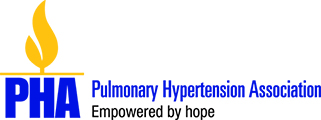Ask a PH Specialist
Question: What is exercise-induced pulmonary hypertension?
Answer:
Exercise-induced pulmonary hypertension (EiPH) is a condition that is now attracting attention. EiPH is defined as raised pulmonary pressures >30mmHg in the setting of normal pulmonary pressures (<20mmHg) at rest.
What happens in EiPH?
Normal pulmonary pressures do not rise beyond 30mmHg during exercise. However, in certain instances, there can be a rise in pulmonary pressures beyond 30mmHg during exercise, which occurs due to an increase in pulmonary vascular resistance. Even though this abnormal response is seen during exercise, resting pulmonary pressures are within the normal limits. Those with EiPH may not notice any symptoms at rest and may complain of only fatigue. Nevertheless, in the presence of EiPH, exercise capacity is grossly reduced when compared to that in individuals without EiPH.
Why is it important?
The presence of EiPH brings to light a sub-type of patients with pulmonary hypertension. It is important that those at risk of PH (i.e., hereditary PAH, systemic sclerosis, etc.) be assessed for EiPH. This may be an early finding and may have a role in altering the treatment and prognosis of the patient.
How can EiPH be diagnosed?
The basis for EiPH is still not very clear. Many controversies exist as to the cause for EiPH. It is not confirmed whether it is an early form of PH or a stable form. Diagnosis of EiPH requires exercise echocardiography or invasive cardiopulmonary exercise testing. Both of these tests require expertise and qualified testing facilities. Your treating physician will have information on these methods and will be able to help you if there is a need for these tests to be performed.
Does EiPH require treatment?
Research in this field is in its very early stages. A recent small trial among those with systemic sclerosis was carried out by Rajeev Saggar, MD, and colleagues at the Heart & Lung Institute, St. Joseph’s Hospital and Medical Center, Phoenix, Ariz. They used ambrisentan (5mg or 10mg) daily for 24 weeks and found a decrease in pulmonary pressure and pulmonary vascular resistance during exercise along with improvements in cardiac output, six-minute walk distance and quality of life. Thus, it would seem that there may be a role for drugs in EiPH. However, more studies are required.
Answer provided by Abraham Samuel Babu, FCR, MPT, FPVRI, (PhD), Assistant Professor, Department of Physiotherapy, Manipal College of Allied Health Sciences, Manipal University, Manipal – 576104, Karnataka, India
This article was first published in Pathlight Summer 2013.

